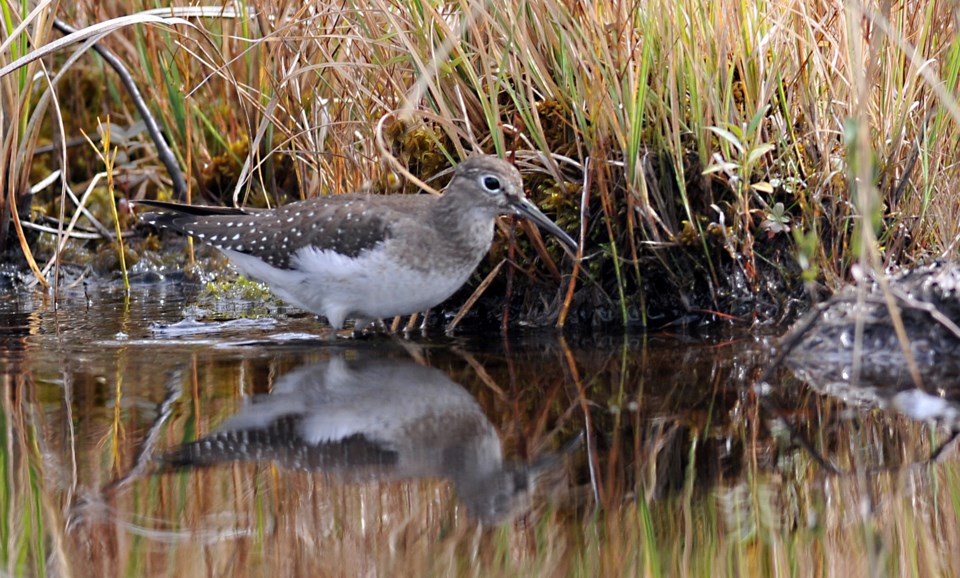It doesn’t seem as though much time has passed since I wrote about the early signs of spring. Being fed up with the cold weather, it was fun to look around and find early harbingers of a better season. Yet now autumn will soon be upon us. What happened to summer?
OK, we’re still a calendar month (give or take a week) away from the official start of the autumn season but, as with other annual climatic shifts, the animals have been aware for a while and are well underway with their preparations for the less-than-balmy seasons ahead.
For the last four decades, I have been tracking the comings and goings of wildflower blooms and am approaching the end of the annual seasonal list. With more than 400 species already having displayed their blossoms, only a few remain to show themselves prior to summer’s end. For me, this project always underscores the themes of ‘time waits for no one’ and ‘time marches on.’ The weeks of summer slipped by quickly as I scrambled to fill in the blanks of the blooming charts.
When the asters (New England, purple-stemmed, calico, and company) pop open their flower heads, you know summer is all but gone. Cardinal flowers are turning brown, ghost plants are on their last gasp, and goldenrods are now dominating the countryside. There are subtle yet definite shifts in the botanical world in late August and, despite the profusion of jewelweed still to be found along stream sides, these are the unmistakable signs of another year’s passing.
Birdlife also tells us of what’s to come. They’re now vamoosing for points south, where they hope it will be warmer and full of bugs. Many people wait for the iconic V of Canada geese to mark autumn’s arrival, but by then, most of the songbirds will have already departed.
To really get depressed about a short summer, just watch shorebirds. Sanderlings, plovers, sandpipers, dunlin, and their ilk start heading toward the bottom of the globe in early August. Mudflats and shallow wetlands have been hosting migrating shorebirds for a few weeks, and their local populations will dwindle to zip very shortly. And we haven’t even had a really good frost yet.
Those of you with impeccable observation skills have no doubt noticed the swallows have left the area. While no longer appearing in huge populations to start with, the missing pair of barn swallows here, the chattering tree swallows over there, the bank and cliff swallows (if you even found them in the first place) are all but gone.
The species making large flocks right now are the starlings. Thousands of them are ganging together to create massive flocks that swirl and pivot across the sky with a notable grace. Pretty, yes, but a sign of summer’s end. The young are fledged, the nest is forgotten, and food is reaped from ripened farm fields. Crickets, beware.
Bluebirds are a tad more subtle yet nevertheless have also formed into flocks that can number in the dozens. They will hang around until the first snowfall prior to shuffling off to the nearby south lands. Being thrushes, like robins, the bluebirds can survive on berries and fruits even if bugs and other insects are no longer available.
Chipmunks and groundhogs are suddenly becoming noticed by their absence. Winter dens are being prepared, and a fresh supply of seeds will be stored underground for mid-winter snacking, but there is no longer time to just lounge in the sunshine. Cold weather comes soon.
Fields of grain and barley stand golden ripe, a sure sign of the end of summer holidays. When I spent summer vacations on my relatives’ farms, the last week before school time was the start of grain harvest. Haying would have been in full swing when I arrived, and the grain harvest was booming when I left. I didn’t mind schooling, but leaving the farm always signalled the end of summer.
Not that September is without warm days. ‘Bluebird days,’ as some call them, these unusually warm, summer-like days are a tease from Mother Nature. Or maybe a long-term promise. But a warm spell here or there doesn’t fulfil like a long, hazy, lazy day in July. (Hmm, did we have any of those this year?)
Not to pile too many negatives on you, but I did see a couple of branches of autumn colour already. Red maples tend to turn early and, sure enough, a few swamps are sporting splashes of crimson and burgundy. At least the sugar maples are holding on to their summertime green, but that will not last much longer than a few weeks.
On my next outing, I will be looking for the blossoms of beechdrops and bottle gentian, a few of the last species to start their blooms for the year. In a way, I hope I don’t find them — yet.



